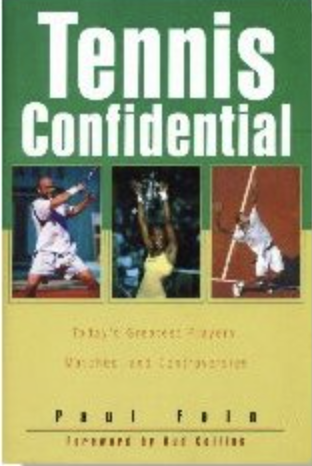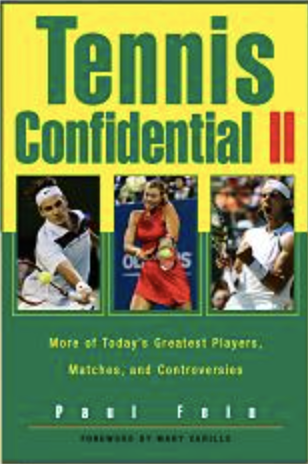Variables for Hitting Drop Shots and Drop Volleys
Hits: 51
Recently, I had a discussion after a practice session with a former college soccer and lacrosse player who started playing tennis in his 30s. Touch shots are my forte. He asked me how I hit the drop shots that confounded him. I discussed the variables in terms of their relative importance.

First, loosen your grip. How much? The faster the oncoming shot, the softer or looser your grip should be — all other things being equal. The goal for both drop shots and drop volley is to produce very soft shots that land within five feet of the net on your opponent’s side and then “die” — meaning, ideally, do not bounce forward.
Second, tilt your racket face backward to produce backspin. How much? Experiment with different amounts or degrees of backward racket face tilt. The greater the backward tilt, the more backspin. The more backspin, the slower the ball travels in the air and the greater the odds that the ball will bounce vertically or even backward.
Third, the wind is a very important variable. If there is a relatively predictable wind going north to south or vice versa, drop shots and drop volleys are much more effective when you execute them against the wind. That is because the wind either reduces the amount of the forward bounce, or even better, pushes the ball back toward the net.
Fourth, you must factor into this equation the distance the ball should travel. The longer the distance, the more difficult this judgment or calculation is. Also, the longer the distance, the less likely your touch shot will win the point. That’s because your opponent has more time to sprint to your shot and also more time to hit a strong reply to it. By definition, down-the-line drop shots and drop volleys are better than cross-court touch shots for this reason.
So why do some players — even the pros — hit crosscourt touch shots. For two reasons. The first reason is that, tactically, they erroneously believe these shots work better than the down-the-line alternative.
The second reason is rarely stated by TV tennis analysts. It’s that many crosscourt touch shots — though they have some underspin — are simply sharp angles. We know that because of the long length of the flight of the ball between the first and second bounces. That long length results because the shot lacks the amount of underspin that bona fide drop shots and drop volleys have. In effect, they more resemble angle volleys and sharply angled groundstrokes.
The fifth variable is sidespin. Sidespin can work with both down-the-line and crosscourt touch shots, but, generally, it’s easier to control with down-the-line shots.
The sixth variable is racket strings. If you’re a touch shot maestro, experiment with different strings and string tensions to determine which ones bring out the best in your touch shots without hurting the rest of your game.
Since my friend played other sports, we also discussed how certain skills could be transferred from certain sports to tennis. For example, bunting in baseball requires a looser, softer grip on the bat, and that’s done with two hands for greater control. Shooting a basketball accurately requires a soft touch and some backspin. Although I haven’t played golf in many years, hitting irons requires backspin so the ball will land softly on the green, and ideally, plop slightly backward. Golfers have it easy though because they can select the ideal club for a given distance from the hole, and they don’t have to hit the shot on the run like tennis players.
You can find much more about this interesting and important topic in my 2021 instruction book, The Fein Points of Tennis: Technique and Tactics to Unleash Your Talent.



